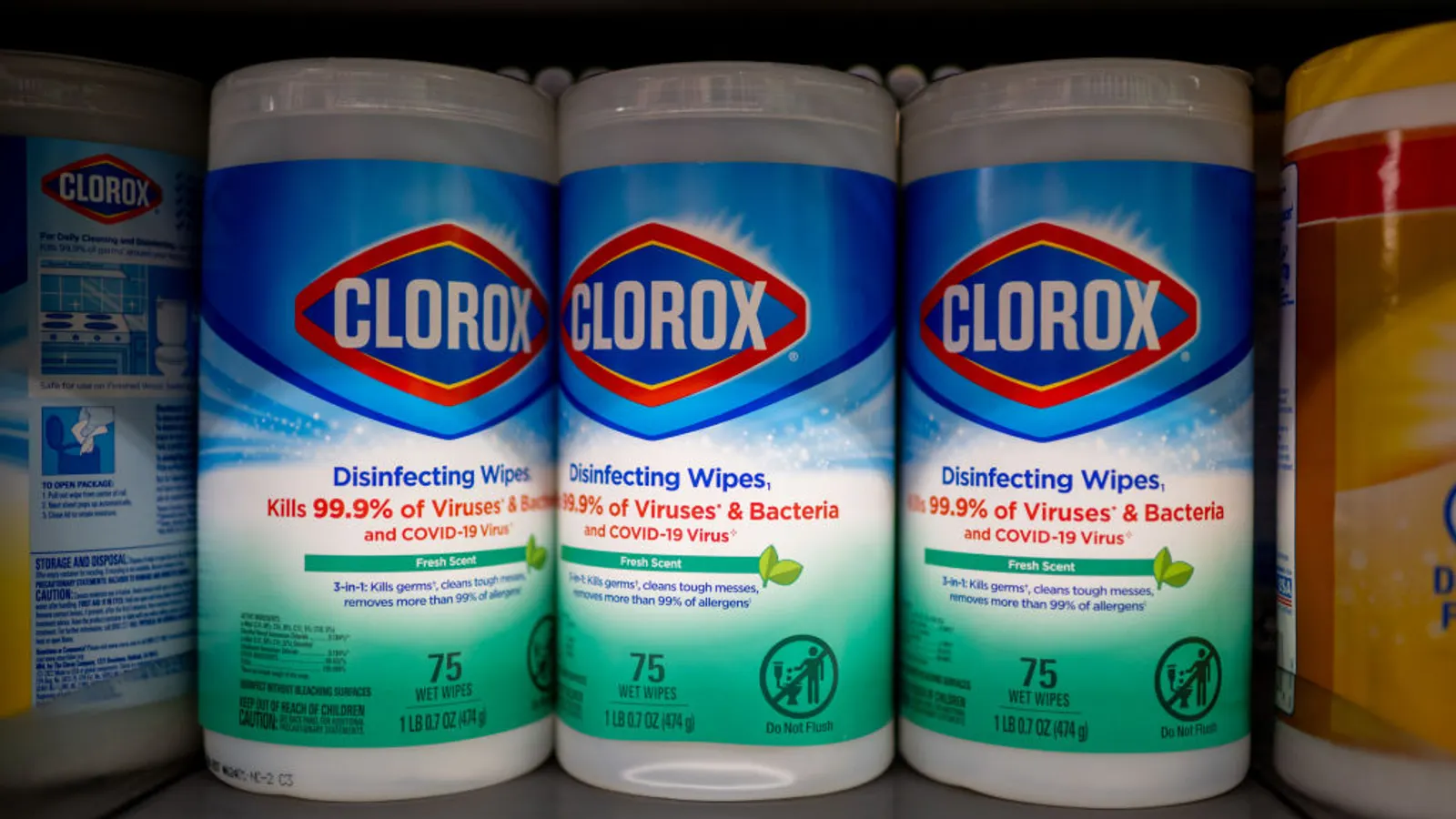Przejście na nową technologię
Clorox rozpoczyna znaczącą modernizację swojego łańcucha dostaw w USA, wdrażając nowy system ERP, który ma zostać uruchomiony w lipcu. Zmiana ta ma na celu porzucenie przestarzałej technologii, która jest używana od 25 lat, przy jednoczesnej optymalizacji produktywności w całej firmie.
Key Highlights:
Kadra kierownicza firmy ogłosiła plany na konferencji dbAccess Global Consumer Conference, prezentując oczekiwany wzrost wydajności.
Nowy system ERP został zaprojektowany w celu zwiększenia widoczności danych i poprawy planowania popytu, umożliwiając prawdziwą transformację w operacyjnym kręgosłupie Clorox.
Dyrektor generalna Clorox, Linda Rendle, wyjaśniła, że zakres tego projektu wykracza poza zwykłą aktualizację oprogramowania; obejmuje on ustanowienie kompleksowej infrastruktury danych w całej organizacji.
Zrozumienie procesu transformacji
Przejście na nowy system ERP jest znane jako skomplikowane i często ryzykowne przedsięwzięcie. Aby złagodzić potencjalne problemy podczas tej zmiany w łańcuchu dostaw, firma Clorox roztropnie zdecydowała się zwiększyć zapasy o 1,5 tygodnia w swoich lokalizacjach detalicznych, które zazwyczaj utrzymują zapasy produktów na około cztery tygodnie.
Jak ujął to dyrektor finansowy firmy, Luc Bellet, "To naprawdę stworzy bufor i ochroni nas przed sytuacjami braku towaru". W rezultacie mogą wystąpić tymczasowe wahania w wynikach finansowych ze względu na nadwyżkę zapasów. Clorox przewiduje zawyżenie swojej sprzedaży organicznej o około 2% do 3% w roku fiskalnym 2025, a następnie równe zaniżenie w kolejnym roku, gdy detaliści będą sprzedawać nabyte zapasy.
Kwestie finansowe podczas transformacji
Wpływ finansowy wynikający z gromadzenia zapasów może również wprowadzić krótkotrwałe zakłócenia. Spółka z optymizmem zakłada, że sprzedaż ustabilizuje się do roku obrotowego 2027, gdy po przejściu na system ERP ustabilizują się bardziej usprawnione procesy.
W styczniu Clorox zainicjował globalne raportowanie i planowanie finansowe w systemie ERP, co pozwoliło firmie skupić się na transformacji operacyjnej, której wdrożenie zaplanowano na lipiec. Transformacja ta rozpocznie się od przeniesienia realizacji zamówień i zarządzania nimi do nowego systemu, zanim w ciągu sześciu miesięcy zostaną włączone zakłady produkcyjne.
Szerszy projekt: Pięcioletni wysiłek cyfrowy
Ta aktualizacja systemu ERP to nie tylko przelotne przedsięwzięcie; jest to część kompleksowego projektu digitalizacji o wartości $500 milionów, rozpoczętego w 2021 roku. Clorox spodziewa się, że nowe korzyści w zakresie produktywności w jego łańcuchu dostaw zaczną się ujawniać w roku fiskalnym 2027.
Warto zauważyć, że przejścia na systemy ERP, choć potencjalnie satysfakcjonujące, mogą wiązać się z poważnymi konsekwencjami finansowymi. Przykładem jest J&J Snack Foods, która poniosła straty w wysokości 20 milionów dolarów w jednym kwartale 2022 roku z powodu zakłóceń w produkcji związanych z aktualizacją systemu ERP.
Wykorzystanie dotychczasowych doświadczeń dla przyszłego sukcesu
Niemniej jednak Clorox pozostaje pewny co do swojego podejścia do tego wdrożenia z różnych powodów. Firma przeprowadziła udane programy pilotażowe w Kanadzie latem ubiegłego roku, które przyniosły pozytywne rezultaty bez znaczących zakłóceń, umożliwiając im wyciągnięcie cennych wniosków, które wzmocnią ich nadchodzące wdrożenie na większą skalę.
Strategia Clorox odzwierciedla przemyślaną ocenę doświadczeń ich konkurentów, aby wspomóc własny postęp. To oparte na współpracy podejście rozciąga się na partnerstwa z konsultantami i partnerami handlowymi, zwiększając ich koncentrację na płynnym przejściu.
Kontekst porównawczy branży
To nie jest odosobniony przypadek w przemyśle wytwórczym; inne znane firmy również rozpoczęły podobne transformacje ERP, takie jak znacząca inicjatywa Mondelēz International o wartości 1,2 miliarda dolarów i zeszłoroczna zmiana operacji Lamb Weston w Ameryce Północnej. Jak trafnie zauważył Bellet: „Chociaż niekoniecznie jesteśmy dumni z tego, że jesteśmy jednymi z ostatnich, którzy weszli do gry, daje nam to wiele korzyści”. Clorox wykorzystuje te wspólne spostrzeżenia, aby podejmować świadome decyzje i unikać potencjalnych pułapek.
Wnioski: Implikacje Logistyczne
Podsumowując, Clorox robi znaczący krok naprzód, zamieniając przestarzałe systemy na nowoczesną technologię ERP. Ta newralgiczna zmiana ma na celu poprawę widoczności danych w czasie rzeczywistym i alokacji zasobów, jednocześnie zwiększając ogólną produktywność łańcucha dostaw.
Wydajna logistyka i zarządzanie łańcuchem dostaw stają się coraz bardziej kluczowe dla utrzymania przewagi konkurencyjnej na stale zmieniającym się rynku. Dla firm zmagających się z podobnymi wyzwaniami, wykorzystanie platform takich jak GetTransport.com może znacznie uprościć potrzeby logistyczne. Oferują one efektywne kosztowo i niezawodne rozwiązania w zakresie transportu towarów, wspierając wszystko, od przeprowadzek domów i biur po dostawę towarów wielkogabarytowych.
Podczas gdy czytanie recenzji i opinii może rzucić światło na najlepsze praktyki, nic nie przebije doświadczenia z pierwszej ręki podczas rozpoczynania takich transformacji. Użytkownicy mogą uzyskać dostęp do niedrogich globalnych opcji transportu za pośrednictwem GetTransport.com, tworząc podstawy do podejmowania świadomych decyzji bez nadszarpywania budżetu. Dzięki szerokiej gamie usług dostosowanych do różnych potrzeb logistycznych, eksploracja GetTransport.com nie tylko zwiększa wygodę, ale także dodaje stopień niezawodności i przejrzystości. Zarezerwuj przejazd już dziś, aby odkryć najlepsze oferty!

 Clorox usprawnia operacje łańcucha dostaw dzięki nowemu systemowi ERP">
Clorox usprawnia operacje łańcucha dostaw dzięki nowemu systemowi ERP">